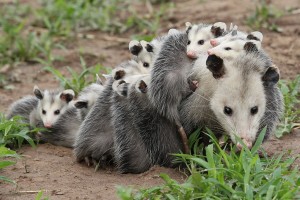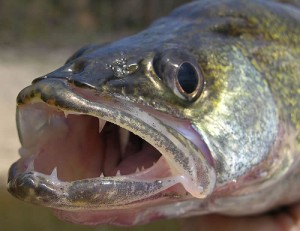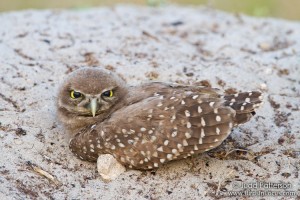Virginia Opossum (Didelphis virginiana)
Virginia Opossum (Didelphis virginiana) Photographer: James Getman
The Virginia opossum is found throughout Kansas in woodlands, croplands and urban yards. It is a marsupial, meaning the female has an external pouch (marsupium) that the newborn must enter to get nourishment from the teats located there. As they grow and develop, they may chose to temporarily leave the pouch, sometimes clinging to the mother’s back as in this photo. Opossums have semi-prehensile tails that allow them to grip tree branches for leverage. However, these prehensile tails are not strong enough by themselves to suspend the animal. As they walk, their tail is often seen grasping leaves to line their nests in the holes of trees or abandoned animal burrows. Their hind feet have an opposable digit that lacks a claw. They can climb trees with ease and spend much of their time there.
They eat small rodents, fruits such as berries, insects, various seeds, snails, crayfish, frogs, lizards, and the eggs of ground nesting birds. Dogs, cats, owls, and other predators kill them but many are killed by cars as they attempt to cross roads.










